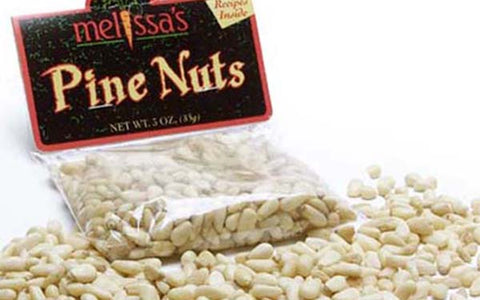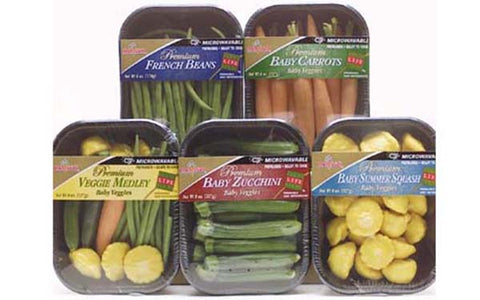End of Summer Veggies and the Beginning of Fall Veggies

Hatch Chiles
Hatch Chiles are fresh chiles that get their name from the area they are grown in New Mexico, called Hatch. Hatch, New Mexico has been growing these chiles for many years and they have been popular with the locals for a long time. They have a delicious unique flavor making them appealing for homemade dishes like chile rellenos, tamales and roasting. Hatch chiles are similar to an Anaheim chile and can be mild or hot, depending on the chile. They grow well in this area because of the valley they are grown in; intense sunlight during the day, and cool evenings which in turn creates this wonderful sought after chile.
Hatch chiles should be kept in the crisper section of the refrigerator and used as soon as possible after purchasing. Most Hatch chile lovers buy them by the case, roast and peel them, then freeze them for up to a year! They are low calorie like most chiles and contain good amounts of vitamins A and C. Hatch chiles are available some of the month of September, so when you see them, buy them!

Don’t miss our new Hatch Chile Cookbook, too. Filled with over 100 recipes to get the most out of your Hatch chiles!

Chile Peppers
Chile peppers have been cultivated for more than 7,000 years, used extensively by the Incas and the Aztecs. Today, they are used by many ethnic groups in their daily cooking preparations. There are several varieties of fresh chile peppers: Yellow (or Caribe), Pasilla (or Poblano), Fresno (Red and Green), Habanero (Assorted Colors), Jalapeno, Anaheim (Red and Green), and Serrano, to name a few. Chile peppers get their heat from ‘capsaicin’, an oil in them that can burn your eyes and mouth. The hottest of these mentioned is the habanero chile, which is off the heat scale in comparison to the others. Generally, the smaller the chile, the hotter the bite. Also, when preparing chiles, if you remove the seeds, the chile will be milder. We also suggest wearing gloves and use caution not to touch your eyes.

Ready-to Use Leeks
Melissa’s Ready-to Use Leeks are washed and cut for convenience. Whole leeks resemble giant green onions. They are used as an essential ingredient in flavoring soups and stews. Leeks have been popular for thousands of years. As a mild and sweet member of the onion family, leeks are related to both onions and garlic, (containing a more subtle flavor and fragrance.) Whole leeks have thick white stalks and slightly bulbous roots with broad, flat, green leaves that wrap tightly around each other. Melissa’s Ready-to Use Leeks can be used in fresh salads or added to a medley to add a delicate onion flavor.

Pearl Onions
Pearl Onions are members of the lily family. They are thought to have originated in Southern Europe. Pearl Onions are available in three colors: white, red and gold. They are available all year around and Melissa’s offers them packaged several ways. Pearl onions are a mild onion, about 1-inch in diameter. They have a papery skin and look like a miniature regular onion. Pearl Onions are very popular around the holidays. They are generally used in vegetable sautés, casseroles or creamed in a side dish. Pearl onions are great on skewers or in sauces too.
To peel pearl onions, blanch them in boiling water, and then plunge them into cold water. Cut off the root end, and squeeze the onion out of the skin. It is very simple and easy for such a delicious treat. Pearls should be stored in a cool dry place, just as you would a large onion. They are very low calorie, and very low sodium with some iron and vitamin C.

Pine Nuts
Pine Nuts are a versatile nut that can be used in many dishes from sauces to salads. They are also known as pinon or pignolia nuts. Pine nuts come from pine cones that are harvested by picking the cones, placing them in a large burlap sack and shaking the nuts to the bottom of the bag. The nuts are then washed and shelled for sale. They are generally eaten raw or pan roasted.
Store pine nuts in a cool, dry area. Pine nuts will stay fresher if they are refrigerated after opening. They can even be stored in the freezer. Pine nuts are a very creamy nut and contain some fiber, iron and vitamin A.

Dutch Yellow® Potatoes
Grown year round in nutrient-rich volcanic soils where the days are warm and the nights are cool, Melissa’s baby Dutch Yellow® Potatoes are produced under ideal conditions to create an irresistibly sweet potato. Our baby Dutch Yellow® has a distinct, yellow flesh with a subtle flavor and a creamy texture. These are one of the best tasting potatoes on the market today. They are naturally sweet and taste like they are already buttered. Dutch Yellow® Potatoes are an excellent source of fiber and potassium, and low in calories. They are great when baked, roasted, mashed or sautéed. They are also delicious in potato salad, too.

Shallots
Shallots are a member of the onion family and are tender in texture, mild in flavor (less pungent than the onion), and quick to cook. Once thought to have originated from an ancient Palestinian city, shallots are now widely used in France. Since each head is made up of several cloves, shallots often resemble garlic rather than onions. Covered with a thin, paper-like skin, shallots are an excellent way to enhance flavor without adding sodium or other salty seasonings. The skin color of a shallot can range from pale brown or gray to a soft rose. Once exposed, the ivory flesh is usually marked by a pale green or purple color. Shallots should be stored like an onion, in a cool, dark place. They are low calorie; contain no cholesterol and very minimal sodium (12g per 3 oz.). Use shallots in sauces, sautés, casseroles, as a condiment or any way you would use an onion. You will love them!

Microwavable Baby Vegetables
Melissa’s microwaveable baby vegetables are ready to go veggies in several varieties: Baby Peeled Carrots, Baby Green Zucchini, Baby Summer Squash, Baby Veggie Medley, French Beans, Sugar Snap Peas and Sno Peas. They are packaged in a value added microwavable dish. In just 2-3 minutes you can create a delicious side dish. These are great for a quick side dish or low calorie snack. Just microwave and serve.
Our newest microwavable vegetable is our Baby Dutch Potatoes in olive oil and rosemary. These are ready to heat in the container and can even be eaten cold! Delicious and easy, try them as a side dish for your favorite meal.

Baby Red Beets
Melissa's Baby Red Beets are very delicious, convenient and easy to use. No more mess from boiling and peeling fresh beets! These no-hassle beets are vacuum-sealed for extended shelf-life (a good 3 months!). Just slice or dice and add to your favorite recipe. They can be served hot or cold.
Melissa's Baby Red Beets are approximately 40 calories each and contain no fat, sodium or cholesterol. Beets are also a good source of fiber and are rich in potassium.

Seasonal Potatoes
Melissa's Seasonal Potatoes are a mix of red, white and purple baby (or creamer) potatoes. These thin-skinned potatoes are mostly round with distinct colored skins. They can be cooked in just about any way imaginable. They are great for summer grilling or salads. They have a light, subtle flavor and a creamy texture. To preserve their nutrients, leave the skins on and simply scrub them gently in water before using. These potatoes are available year-round. Seasonal potatoes are hand-selected for excellent quality. Look for firm, well shaped and fairly smooth potatoes. Store in a cool, well-ventilated area rather than in the refrigerator. Potatoes are low fat (about 20 calories per ounce) and have no cholesterol or sodium. Potatoes are a good source of vitamin C and fiber.

Boiler Onions
Melissa's boiler onions are considered a dry onion (mature onion) harvested when their inner flesh is juicy and is covered with a dry papery skin. Melissa’s Boiler Onions are available in white, red, and gold. These versatile onions are about one inch in diameter and impart a sweet, pungent flavor. They can be cooked as a side dish and are favored for use in pickling and stews. Boiler onions are available year-round. They are perfect for summer grilling and holiday dishes. Delicious in salads, soups, main dishes or barbecued on skewers…
Melissa’s Boiler Onions should be firm, with dry, papery skins. Store whole dry onions in a cool, dry place with good air circulation for up to two months. Once cut, tightly wrap any unused onion in plastic, refrigerate and use within a few days.

Cactus Leaves
Cactus Leaves are actually a delicious side dish or ingredient for many recipes. Cactus leaves are the pads of the prickly pear cactus. They are also called nopales. They taste similar to asparagus or green beans. Cactus leaves are great in omelets or casseroles. They are also delicious sautéed and served as a side dish.
Cactus Leaves are an excellent source of Vitamins A and C. They are low in calories. They should be stored in the refrigerator and washed before use. Also, be careful of any pricks which can poke your skin. Melissa's has them available ready to eat in a 12/1# tub. They are washed and diced them making them easy to use.

